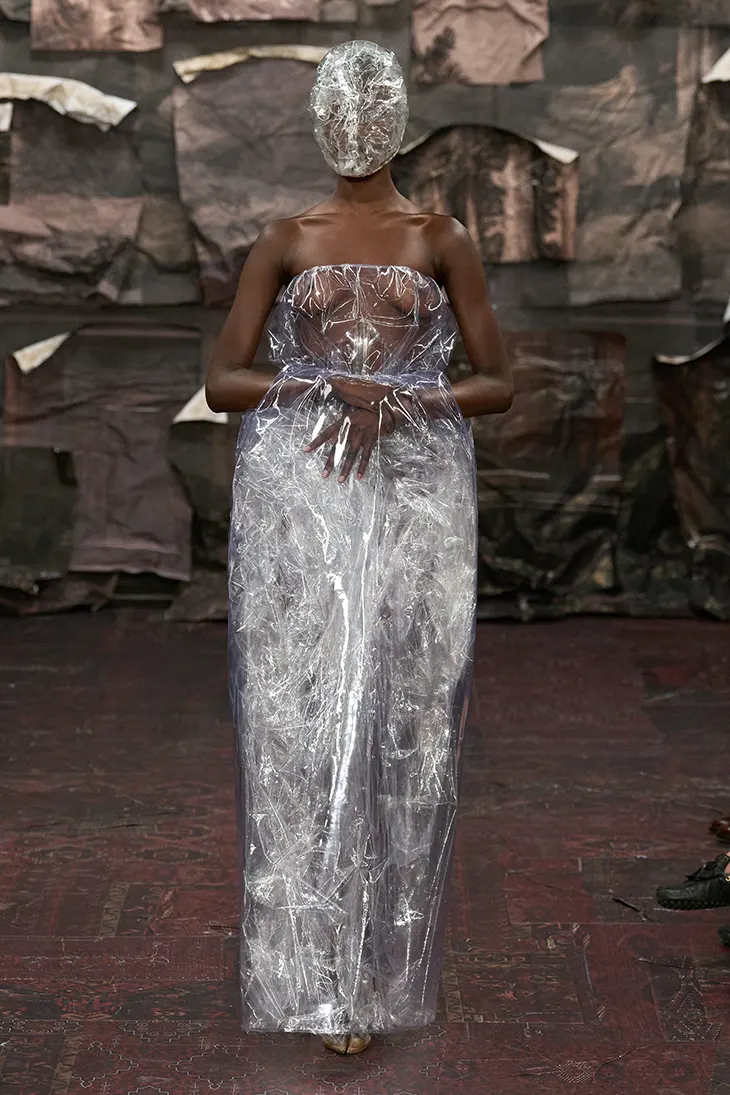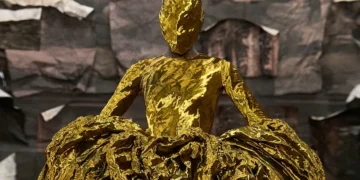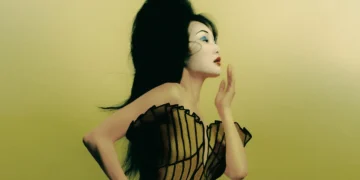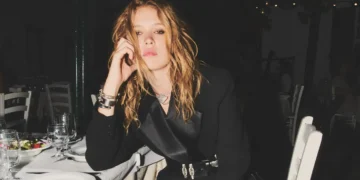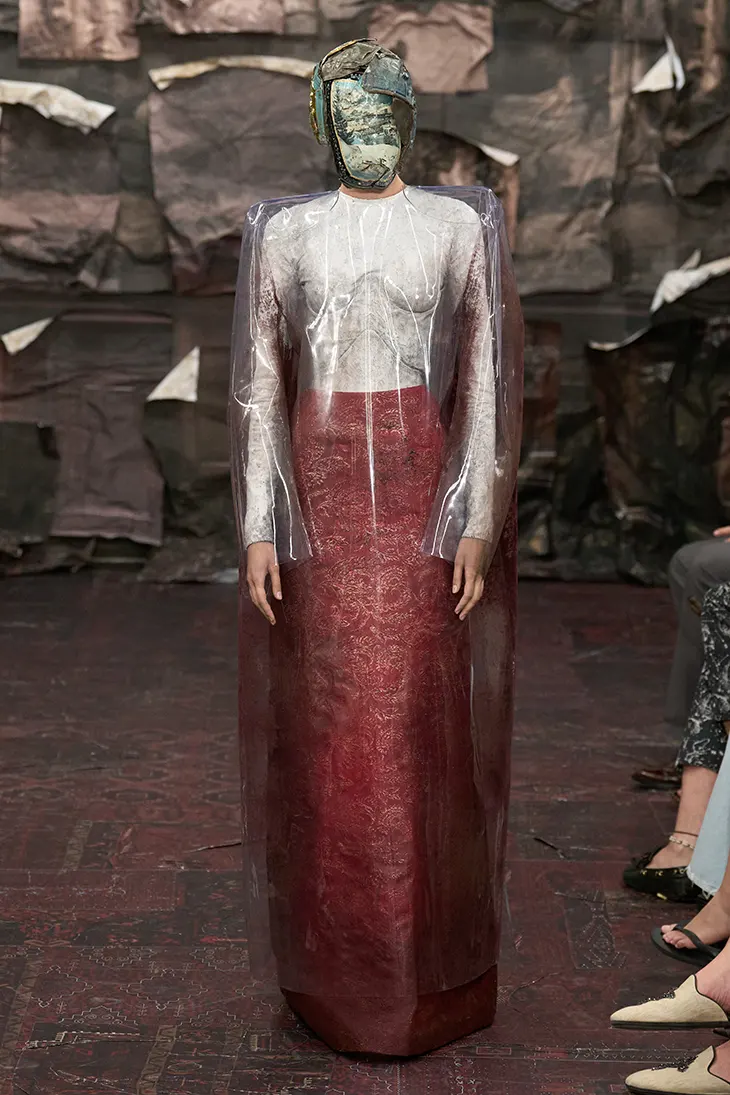
At Le Centquatre in Paris, Maison Margiela’s Artisanal 2025 show unfolded like a devotional text, each page conjured by Glenn Martens in layered references to Flemish Gothic architecture, 16th-century interiors, and the anatomical precision of Northern Renaissance painting. The collection rendered the human figure as sculpture and sanctuary, with corsetry acting as both structure and symbol. Under Martens, garments did not clothe; they encased, veiled, and refracted.
COUTURE COLLECTIONS
The silhouettes referenced the verticality of spires and the stoic saints carved into church facades. Materials, clear plastic, stretch jersey, and duchess satin, were engineered into domed bustiers, sculpted coats, and veiled dresses, often anchored by a corset cut beneath the rib cage and over the pelvis. This anatomical framework recurred throughout, reinforcing the body’s transformation into architecture. Shoulder lines extended via plexiglass padding; surface textures mimicked stone, glass, or aged wallpaper.
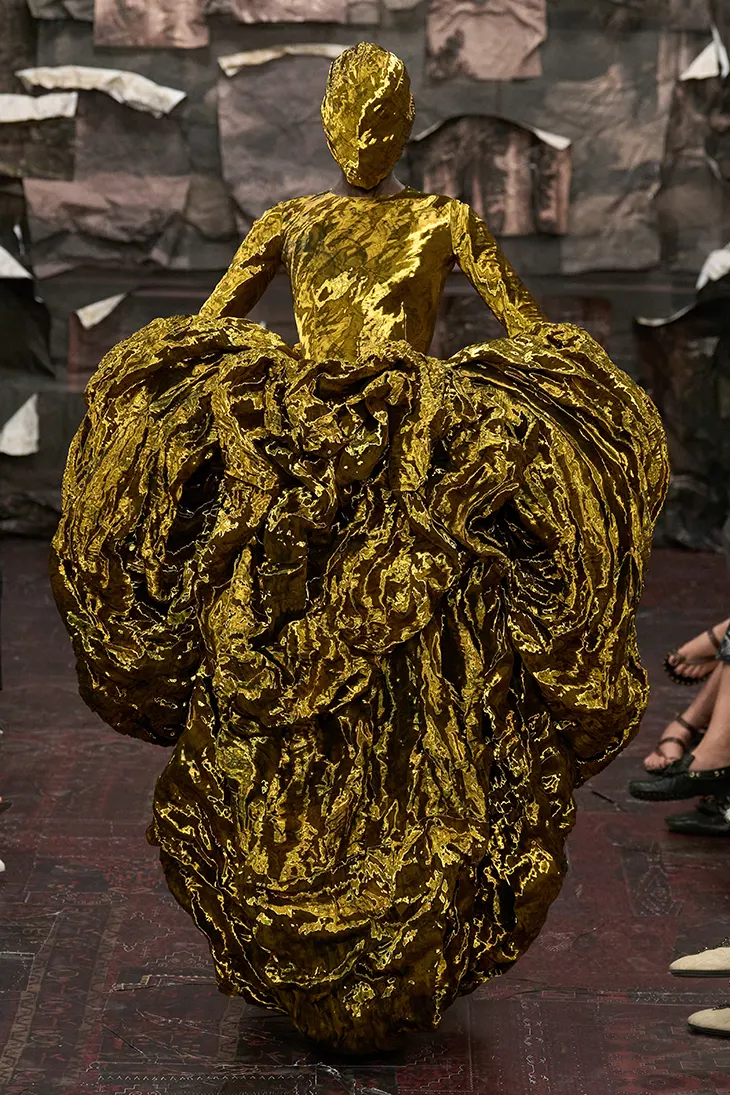
Martens tapped into the domestic and sacred, abstracting Northern European interiors into motifs that appeared as trompe l’oeil prints on plastic and fabric. Floral leather wallpapers, taken from 16th-century Flemish homes, were reproduced on copy paper, then layered over coats, dresses, and boots. Nature morte still lifes, flowers, game, and fruit, were digitally printed, sliced, and reassembled into three-dimensional appliqués that winged out from sleeves, skirts, and masks.
Masks, a recurring element in Maison Margiela’s visual vocabulary, were built from crushed metal boxes, varnished paper, and illusion tulle. In some cases, they fully obscured the face; in others, they echoed the material of the garment. Rather than theatrical affectation, they felt ritualistic, icons stripped of individuality, submitted to the craft.
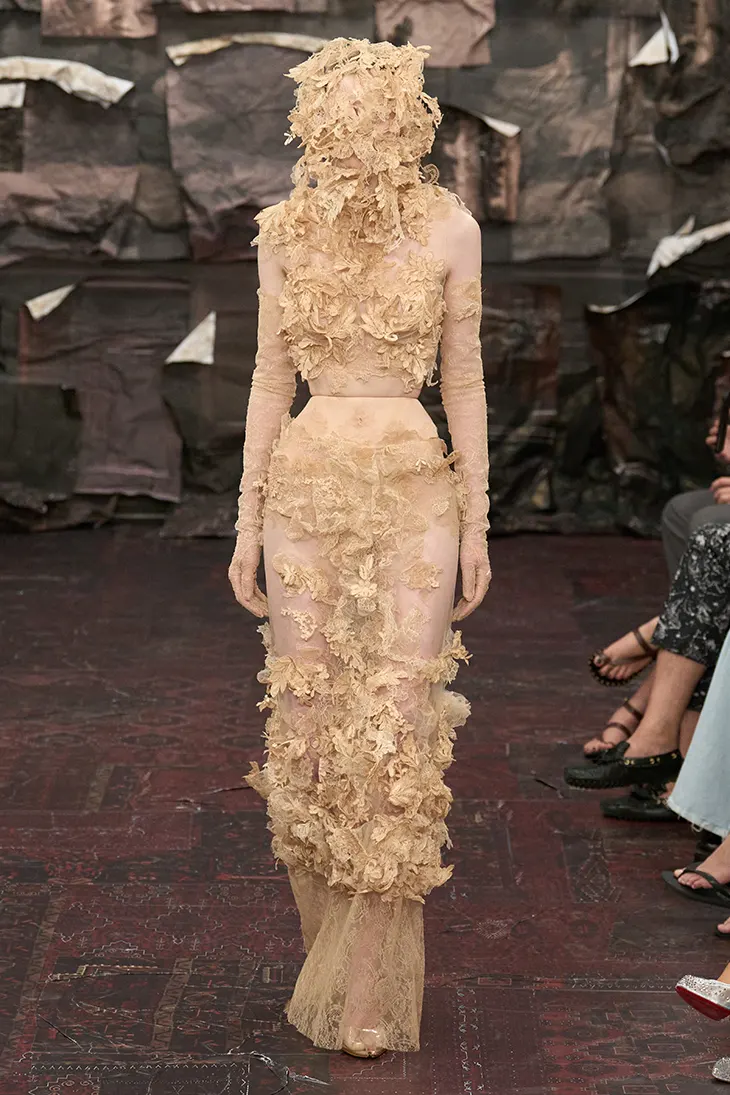
Accessories further punctuated the narrative. The Tabi boot reemerged in claw-toe form, strapped in clear plastic, or rendered in canvas and brocade. Footwear was set on perspex wedges that elevated models to reliquary height. Jewelry, often deadstock, encrusted collars and masks like altar offerings. The palette shifted from the muted hues of oxidized metals and dusty tapestries to more luminous tones, mother-of-pearl, fluo green, and burnished gold.
Upcycled leather biker jackets, linings, and socks carried the past into the present, reshaped as tailored outerwear or skirts. Knitwear became a ground for collage, embroidered with paper, beads, or chains. Lace and tulle illusion appeared like second skin, sometimes breaking away from the body in fragments that fluttered like ash or fossilized blooms.
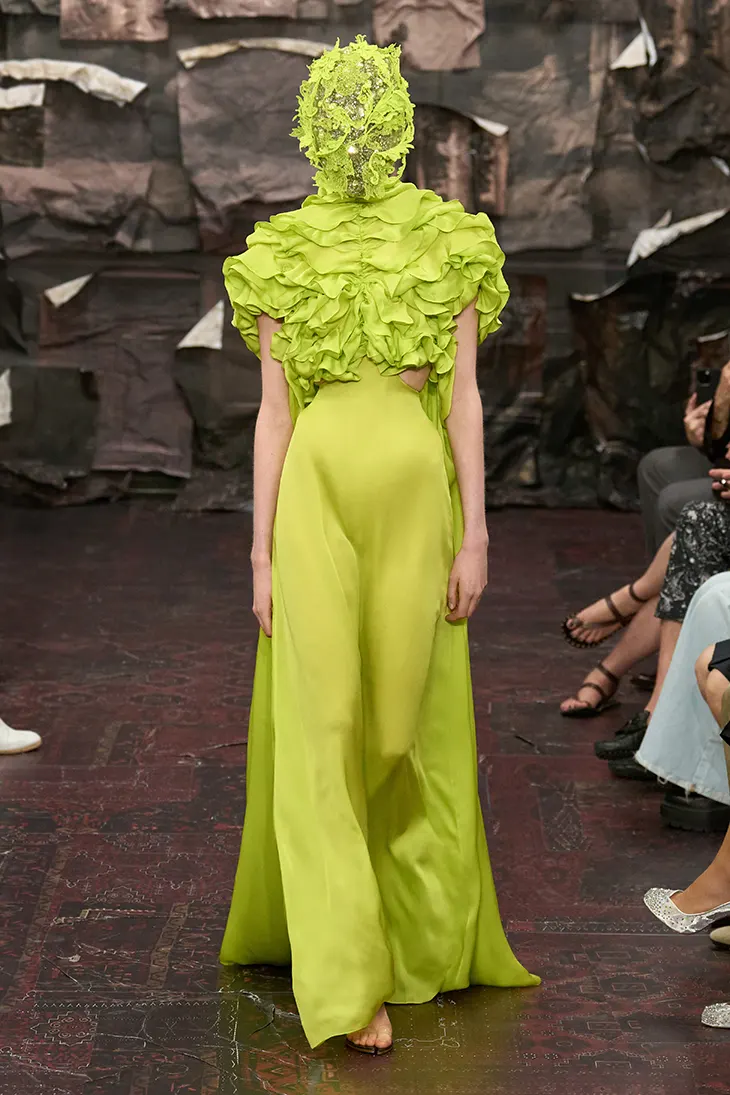
Martens’ construction methods evoked both decay and devotion. Dresses appeared scorched, wet-draped, or blooming; garments bore the brushstrokes of Gustave Moreau in print, their surfaces trembling between image and object. Nothing was static, each outfit a tableau, each figure a moving relic.
The soundtrack, a deconstruction of works by Smashing Pumpkins, emphasized the show’s collision of sacred and subversive. But Martens offered no binary. Instead, this collection built a haunted continuum, where Gothic memory, plastic artifice, and couture ritual met on equal ground.
